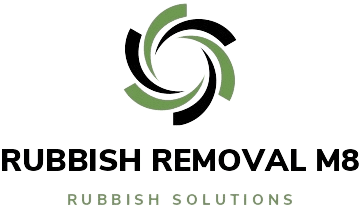Rubbish material means the products we use every day have reached their expiry date. But what if you come to know about the innovative methods of rubbish removal that can transform the waste into useful, durable materials? This idea originates from the circular economy. Unlike the traditional method of disposing of waste carelessly, this modern concept focuses on reusing, repairing, and recycling materials to mitigate the risk of climate change. In this article, we’ve rounded up why the circular economy matters for waste removal and how companies are adopting this concept.
What Is the Circular Economy?
The circular economy is completely opposite to today’s linear economy, which is based on the traditional principle of choosing, manufacturing, and throwing away the stuff that can not be used. This particular strategy is designed to utilise the resources in the most efficient way possible and eliminate the rubbish material. It focuses on the reuse and recycling of resources in order to prolong their life span. It conserves new materials to be used in production and decreases carbon emissions. This way, the concept of a circular economy is helping companies think creatively and differently, valuing natural resources and other materials at every stage.
Why Does the Circular Economy Matter
Every year, Australia produces millions of tons of waste that is converted into landfill. The linear approach of taking, making, and discarding materials is depleting natural resources faster than you think. It does not make the world sustainable. Conversely, a circular economy is an individualised approach since it preserves natural resources and reduces the extent of landfills. That is why this concept is important to rubbish removal:
- Lessens Pollution: A smaller amount of non-recyclable waste will result in a smaller percentage of pollution.
- Conserves Resources: Recycling products prevents the necessity to go back to the natural resources to be used in the production process.
- Supports the Economy: Recycling and reusing old materials boost the business of the local community and their financial position.
- Mitigates Climate Change Risk: The reuse of discarded stuff means a lower carbon footprint, decreasing the environmental impact.
Three Key Principles of the Circular Economy
Take a look at the following principles of the circular economy:
Rethink and Reduce the Waste Size
It highlights that manufacturers must remember the reusability, recyclability, and durability when making the products. This minimises the utilisation of hazardous chemicals, which cannot be recycled. For instance, modern gadgets promote the replacement of damaged components rather than purchasing a new one.
Fix and Use till the End of a Useful Life.
Old things should be repaired or refurbished as much as possible instead of being thrown away. For instance, refurbished furniture and refurbished laptops are captivating attention these days among low-end consumers.
Natural Systems Recycle and Regenerate.
The circular economy promotes sustainable operations in order to conserve the available natural resources. The greatest benefit of composting is that biodegradable wastes are converted into nutrient materials. Crop rotation, alongside biodiversity, enhances the health of soils as a result of green farming practices.
How Australian Companies Adopt the Circular Economy
Here are the ways that companies are using to contribute to the circular economy:
Adopting Circular Design
The focus of companies has shifted from just using the materials to throwing them away to a circular approach. They are now meticulous towards easy repairing, recycling, or upgrading of the same products. This approach not only reduces the size of the landfill waste but also boosts the customers’ loyalty.
Collaboration with Recycling Companies
In the current days, firms are collaborating with reputable recycling departments to make sure that materials are reused or recycled in a timely and efficient manner. Such joint practices assist in coming up with new methods of reusing or recycling old materials.
Tack and Back Programs
Many environmentally-focused companies take old products from customers for refurbishing or repairing. This ensures minimal waste and proper recycling.
Using Recycled Materials
Encouraging the use of recycled materials in products decreases the demand for new materials and their repercussions. It also helps customers get high-quality products that ensure maximum value.
Increasing Awareness
Moreover, enterprises are training the buyers on sustainable methods. Such companies do launch campaigns to encourage efficient disposal, correct recycling or repair services among the environmentally-conscious users.
Conclusion
The circular economy is a powerful approach to turning rubbish into durable, long-lasting resources. By following its principles, companies can preserve natural materials while safeguarding the planet. This approach ensures a cleaner and more sustainable future, where waste becomes a thing of the past—especially when all firms actively collaborate with rubbish removal and recycling units.




